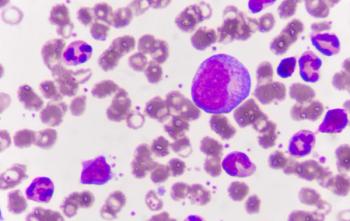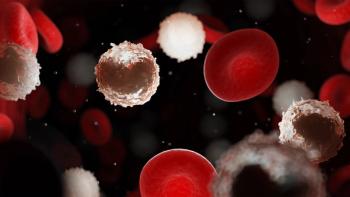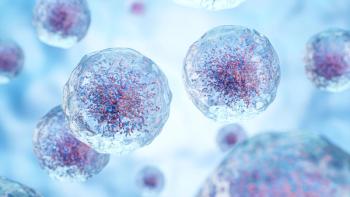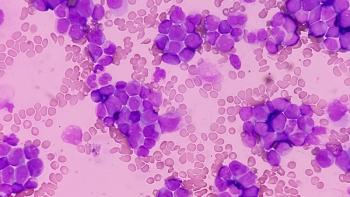
Survivorship Care: Where We Are and Where We're Going
A 15-year brain tumor survivor offers advice and discusses the advances that have been made since his diagnosis.
Michael Feuerstein, PhD, MPH
The number of people surviving cancer has significantly increased over the past 20 years. With survivorship, however, comes a different set of day-to-day challenges among some of these individuals. Besides learning how to return to a “new normal” life, many cancer survivors may still experience both physical and emotional side effects of the disease.
Michael Feuerstein, PhD, MPH, knows all about these challenges as a 15-year brain tumor survivor. In 2002, his world was turned upside down when he was diagnosed with anaplastic astrocytoma, a rare malignant brain tumor for which the cause is still unknown. He was at stage III and given 3 months to a year to live. Feuerstein underwent surgical resection, followed by maximum brain radiation treatment and 12 months of chemotherapy.
Now, Feuerstein has taken on a personal mission to help other survivors find resources that weren’t available when he was going through the same. Shortly after his diagnosis, he switched focus from clinical psychology to cancer survivorship. He has edited books for health care providers, co-wrote a book for survivors and created the Journal of Cancer Survivorship: Research and Practice, which is aimed at health care professionals who need to help patients after cancer diagnosis and primary treatment.
“My focus was on disseminating information to other cancer survivors and health care providers that would help improve the health, function and health care that survivors receive, as well as their overall quality of life,” says Feuerstein. In an interview with Oncology Nursing News, he discusses what has been accomplished thus far for survivors, what is still needed and what his next steps are.
What has been accomplished in cancer survivorship over the last decade?
There is a greater emphasis on adolescent and young adult cancer survivors. Before these individuals were included in the larger group of cancer survivors and the focus wasn’t related to the unique problems that they experience.
There has also been a greater emphasis on the older cancer survivor. That is the individual that is 65 years old or above, which turns out to be the highest percentage of cancer survivors. There is more research and more treatment options for these individuals, too.
Next, there has been the development and implementation of new clinical tools such as the survivorship care plan. Care plans like this didn’t exist when I was first diagnosed. This clinical record organizes the type of treatment delivered for a specific cancer diagnosis and the expected challenges that individuals might have later on in life. This was not communicated to patients or other doctors in the past. However, while it is informative, it is still an open book in terms of learning what it really does to help improve outcomes such as long-term health, function or well-being.
There are also new treatment guidelines for cancer survivors that have been published by groups such as the American Society of Clinical Oncology (ASCO) and the American Cancer Society (ACS). These at least provide some kind of general framework to organize follow-up treatment and to address problems that cancer survivors might have such as fatigue, pain, anxiety, depression and poor diet.
Where can survivors find these resources?
Websites of the National Coalition of Cancer Survivorship, National Cancer Institute (NCI), ACS, ASCO, as well as the major NCI-affiliated cancer centers in the United States.
What challenges do cancer survivors face today?
One thing that many, not all, survivors experience over time are cognitive limitations. Problems with memory, attention and decision-making. They tend to occur as a result of the treatment — mainly exposure to chemotherapy or in the case of brain tumor patients, the tumor and direct radiation to the brain.
These problems can continue and they can interact with aging, which we know sometimes can also contribute to problems with memory. It’s a challenge that many people have and one implication is that it can influence a person’s ability to remain at work. Not necessarily return to work, but to remain there.
There is research that shows that after a couple of years there are certain cancer survivors that just can’t make it in the workplace. It might be because of these cognitive problems or it might be that they just decided to just stop working to pursue other interests. But there are plenty of people that need to and want to work. So, how do you deal with that? Very carefully. There is a law called the Americans with Disabilities Act. Not a foolproof law and it doesn’t mean employers must adhere to every aspect of it. If employers and employees can’t find reasonable accommodations for these individuals or they are deemed to be too expensive, employers can make the argument that they just can’t accommodate the cancer survivor and they just “let them go.” Of course, that influences income but it also can affect a person’s support system and self-esteem or self-worth.
Emotional changes can occur during and after treatment like stress, anxiety and depression, and these can affect relations with others and work ability. But the positive thing to keep in mind is that those changes can be treated either with medication or specific kinds of counseling techniques. Over time, these emotional reactions tend to decline and stabilize, although often they are never quite down to where they were beforehand.
Also, many people after cancer treatment begin to experience fatigue and decreased activity level. There may be a tendency to become very sedentary, not really want to exercise or even takes walks and not follow the kind of dietary control they may have had beforehand. Oftentimes, what happens is these cancer survivors start to gain weight. Weight has been shown to be a predictor of recurrence in certain cancers.
There are opportunities within cancer centers to get more involved in all sorts of exercise for cancer survivors to improve this problem. In many ways people start to think, “Well, I had my major health issue, so why do I have to exercise or watch my diet?”
They feel like they are justified to not worry about health anymore. It’s like, “OK, I had the worst thing that could happen to me.” But that is not necessarily true because cancer survivors just as others can develop all sorts of major health problems.
In fact, there are studies that show that cancer survivors don’t necessarily die of cancer, but they die from preventable disease like heart disease or diabetes. This fact relates to the importance of taking care of yourself as a survivor, not only regarding the lifestyle aspect, but also taking a more active role in making sure that you receive the kind of health care that keeps you as healthy as possible. Also, it is important to realize that conventional health care might not always be the best way to go with all your health care needs. There might be some alternative care approaches like acupuncture, meditation or now there are cancer centers that offer and continue to study approaches such as tai chi. There are many approaches that people can take to complement conventional treatment.
What does the future look like in this area?
Over the past decade there has been emphasis on the cancer survivor. There are providers of many types (oncologists, oncology nurses, family doctors and nurses, social workers, psychologists) that are skilled in the long-term care of these survivors. But in general, oncologists, as they should be, are focused on the treatment of cancer and not always the secondary problems that can occur. So, the implementation of several innovations we discussed are still not available in many practices. While challenging, it is important to advocate for yourself and ask for referrals to others who can help. They might not be your typical health care provider but may even be the YMCA.
I see the comprehensive management of cancer survivors improving as family doctors and other primary care providers learn more about survivorship and the problems that various types of survivors have. More and more of quality care for cancer survivors will be nested into everyday care. You have to keep in mind that it’s only been in the last 15 to 20 years that there has been such a rise in people living after cancer treatment. The trend is up, so in the future I think the care of cancer survivors will be more and more routine, not very different from how a broken arm is managed now.
But unfortunately, I do think the overall health care of cancer survivors will get worse before it gets better because all the statistics show that as baby boomers move into their seventies and eighties cancer incidence will increase tremendously, and, as a result, cancer survivors will increase because treatments are more effective. So, the challenge is to get these approaches implemented into everyday care in a timely manner, so providing quality care for these new cancer survivors doesn’t become a major public health problem.
If you had one takeaway message for those in the Heal audience, what would it be?
It’s very important for the individual following treatment for cancer, when possible, to take some control over his or her situation and not totally delegate it to a health care provider or a caregiver. It’s the idea of empowerment and self-management. Many of us rely on our health care providers or that somehow the “health care system” will magically take of us. There is evidence that tells us this may not be the wisest approach to take with our long-term health, function or well-being. There is a need to take more responsibility for some of the problems that people can experience after diagnosis and treatment for cancer because the significance is much greater for you than anyone else.
What's next for you in terms of your work with cancer?
I want to continue doing work with cancer survivorship. We have a new communication tool that we developed over the past four or five years, myself and three other colleagues at the Uniformed Services University of the Health Sciences, that can help breast cancer survivors identify 18 different common problem areas experienced after diagnosis (for example fatigue, depression, exercise, diet, work, finances) and treatment. It also lets people know where they stand on various skills necessary to pursue quality health care. We recently developed the tool into an app called the Cancer Survivor Profile (CSPro). This CSPro graphs a single patient’s scores on the problem areas and compares her scores to people who have been out of treatment with breast cancer for a couple of years. They can get an idea with their nurses where they stand and what they need to do.
It is not available for wide scale use. We are still evaluating its effectiveness. I’m also working on a CSPro for young adult survivors. Currently, the CSPro-Breast Cancer version is translated into Chinese and research is being completed on the use of the tool in China and Hong Kong. I want to help mobilize people, so they can better manage what’s going on over the long term.
Newsletter
Knowledge is power. Don’t miss the most recent breakthroughs in cancer care.
















































































